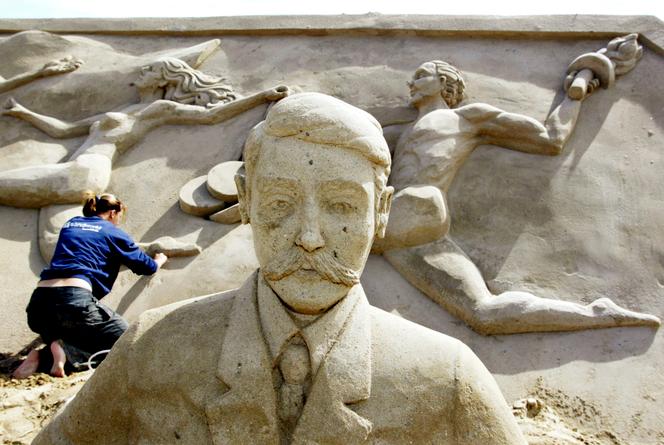


The Chapelle de l'Epiphanie in the 7th arrondissement of Paris is home to a painting that speaks volumes about the family birthplace of Pierre de Coubertin (1863-1937), the founder of the International Olympic Committee (IOC) in 1894 and recognized as the father of the modern Olympic Games.
In this artwork, entitled Le Départ des Missionnaires vers l'Asie ("The Missionaries' Departure to Asia," 1868), his father, Charles Louis de Frédy de Coubertin (1822-1908), a Sulpician painter, is shown with 5-year-old Pierre and his older sister. All three had come to kiss the feet of missionaries preparing to set off to evangelize the Far East.
Indeed, the de Coubertin family was steeped in a royalist and devoutly Catholic milieu. Like his brothers, Pierre was educated by the Jesuits at the Collège Saint-Ignace in Paris, where he received a religious education, as well as a Hellenistic and Latinist one. Nonetheless, he distanced himself from his school teachings, as he testified in his first book, published in 1888, L'Education en Angleterre ("Education in England"). "In it, Pierre de Coubertin reveals his skepticism about the Jesuit curriculum, which emphasized religion and classical literature at the expense of natural and modern sciences, but also at the expense of physical education and sport," said Dries Vanysacker, a professor at the Catholic University of Leuven, in Belgium, and specialist in the relationship between sport and religion.
A few years after his schooling, de Coubertin drew closer to the teaching methods of the Dominicans, who promoted body culture. In 1891, at the age of 28, he enlisted the support of preacher Henri Didon (1840-1900), a religious priest and sports enthusiast, who was principal of the Collège Albert-le-Grand in Arcueil, near Paris, to carry out his project of organizing sports competitions between religious and secular schools.
"This priest had trained at the Rondeau seminary in Grenoble, where [every leap year between 1832-1906] the 'Promenades Olympiques' were organized, mini-sports competitions inspired by the ancient Games. In Arcueil, Henri Didon also mixed intellectual education with physical culture and sports, with the idea of reorganizing Catholic education," said Vanysacker.
Besides the influence he had on de Coubertin's entire life, Didon inspired him to coin the famous adage that would later become the official motto of the Olympic Games: "Citius, altius, fortius" ("faster, higher, stronger"), which the priest is said to have uttered in 1891 during a sports competition organized at the Collège Albert-le-Grand. "For Didon, citius referred to the potential of the mind and intellectual studies. Altius applied to the elevation of the soul and the path to God. Finally, fortius referred to the body, shaped by sport and physical education," said Vanysacker.
You have 68.82% of this article left to read. The rest is for subscribers only.
